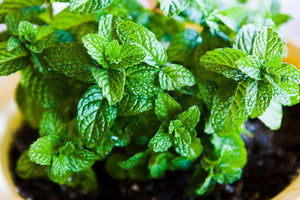How to Design a Thriving Garden Using the 12 Principles of Permaculture
TechniquesTired of constant weeding, watering, and fertilizing? What if your garden could work with nature instead of against it? Permaculture is a sustainable gardening approach that mimics natural ecosystems, reducing labor while increasing productivity. By following its 12 core principles, you can create a self-sustaining, eco-friendly garden that thrives year after year.

Table of Contents
What is Permaculture Gardening?
Permaculture design is an approach to gardening and landscaping based on learning concepts from healthy, thriving natural ecosystems. Bill Mollison and David Holmgren coined the term in 1978, and since then, permaculture has grown and evolved as more people joined their movement.
Today, permaculture mixes elements of philosophy, ecology, sustainability, and agricultural design principles to create a diverse, healthy garden, lawn, or landscape. A gardener who wants to create a permaculture garden will consider the whole system, including humans, animals, soil, weather, and plants. The end result is a garden or landscape that is largely self-sustaining and regenerative.
David Holmgren outlined 12 permaculture design principles in his book, Permaculture: Principles and Pathways Beyond Sustainability. Using the following principles will help you grow a healthy garden that looks natural, supports wildlife, and allows you to enjoy the befits of a low-maintenance landscape.

How to Implement Permaculture Principles in Your Garden
Permaculture offers a sustainable approach to gardening by harmonizing with nature's processes. By integrating its 12 core principles into your garden design, you can create a self-sustaining ecosystem that conserves resources and promotes biodiversity. Start where you are and explore each principle to see where you can implement them. Over time, you can transform your garden into a resilient and productive haven.
1 - Observe and Interact
Creating a design solution that works with nature takes patience and observation of the environment and natural surroundings. Use your garden journal to take notes as you observe the changing seasons.
Where does water collect? What plants thrive naturally? Note when plants emerge, when they bloom and fruit, and when they go to seed.
2 - Catch and Store Energy
Collecting resources when they’re plentiful allows you to maximize your success. Use rain barrels to collect water. Preserving your tomato harvest by canning a delicious sauce will capture resources when they're readily available.

3 - Obtain a Yield
No one wants to work for nothing, and meaningful rewards for labor add to the value of the work.
Every element in your garden should serve a purpose—grow food, attract pollinators, or improve soil health. Choose high-yield crops suited to your climate.
4 - Apply Self-Regulation and Accept Feedback
Don’t try to force something that isn’t working. Pay attention to what your garden is telling you. If pests appear, consider why—overcrowding, lack of predators? Adjust naturally instead of resorting to chemicals.
5 - Use and Value Renewable Resources and Services
In permaculture gardening, renewable resources are favored over nonrenewable resources. When resources are depleted, allow them time to replenish. For example, you can use kitchen scraps in your compost. Also, consider the materials you use for planting and harvesting. Heirloom plants, which can produce their own seeds, are perfect for permaculture gardens.
6 - Produce No Waste
This is a goal, but it won’t always be possible. Still, taking steps to reduce your waste can go a long way.
Turn “waste” into resources—compost organic matter, use grass clippings as mulch, and repurpose old materials for garden structures. You can also use greywater to irrigate and patch up old tools rather than discard them.

7 - Design from Patterns to Details
There are patterns found in nature that you’ll want to use, such as spirals, waves, and branching structures. Apply these to your garden layout for efficiency and aesthetics.
Other patterns that might help with your design's details include your habits. What paths do you use to move around your garden? The places you intend to use the most ought to be the easiest to get to.
8 - Integrate Rather Than Segregate
Companion planting and polycultures create stronger, healthier gardens by using plants that support each other. In nature, you'll find plants growing together rather than being segregated. Together, they thrive in their season.
Companion planting, like a Three Sisters Garden, is an excellent example of how to integrate and make the most of your space.
9 - Use Slow and Small Solutions
As you work to mimic natural systems, you’ll notice that change happens slowly. This principle can keep you from overextending yourself by taking on big projects that you can’t keep up with. Small changes are easier to make and sustain.
Start with manageable changes, like a compost bin or a rain garden. Over time, these small steps lead to major improvements.
10 - Use and Value Diversity
A diverse garden is more resilient. When you have a lot of different types of plants, you’re less vulnerable to crop failure, disease, and pests. Diversity creates a more well-rounded harvest and helps you maintain your soil quality and keep a healthier garden.
Mix flowers, vegetables, and herbs to attract beneficial insects and prevent disease.
11 - Use Edges and Value the Marginal
The corners and neglected spaces in your property deserve some attention, too! In-between areas like borders can be used to achieve valuable results. Corners are an excellent spot to grow perennials like asparagus and rhubarb.
12 - Creatively Use and Respond to Change
Don’t get stuck in your habits from two seasons ago. The weather changes, your property changes, and you change. Stay adaptable and experiment with new techniques.
Written by Teresa Chandler

How Perennial Vegetables Fit Into a Permaculture Garden
Many gardeners focus on annual vegetables, but perennials offer a sustainable, low-maintenance alternative. These crops align with permaculture principles, requiring fewer resources while building a resilient ecosystem. Instead of planting in traditional rows, consider layered, self-sustaining systems:
- Grow asparagus and lovage as understory plants beneath fruit trees.
- Pair chives with strawberries to deter pests.
- Use sorrel and watercress along pathways or pond borders.
- Let radicchio and kale flower and reseed naturally.
By integrating perennials, your garden becomes more productive with less effort—just as nature intended.
Permaculture FAQs
Can I practice permaculture in a small backyard?
Yes! Even in small spaces, you can apply permaculture principles. Collecting rainwater, using vertical gardening, and companion planting will maximize efficiency.
How does permaculture reduce garden maintenance?
By designing gardens that retain water, improve soil naturally, and use companion planting, permaculture minimizes the need for weeding, watering, and fertilizing.
What are the best plants for a permaculture garden?
Perennial vegetables, heirloom fruits, native flowers, and nitrogen-fixing plants (like clover and beans) are great choices. Companion planting also plays a key role.
Where can I buy seeds for a permaculture garden?
High-quality, heirloom seeds are best for a sustainable garden. Check out Sow Right Seeds for a great selection!
Start Your Permaculture Garden Today!
You don’t have to take a special course to start adding permaculture design elements to your garden. You can apply the wisdom from these permaculture principles for a more healthy, productive, and sustainable garden in almost any situation. Each of these principles can be scaled to a project as large as a food forest or as small as a container garden.
Applying permaculture principles will help you build a sustainable, productive garden that requires less work over time. Ready to start? Choose a principle to implement today—whether it’s collecting rainwater, planting companion crops, or observing your garden’s natural patterns.
For the best results, start with high-quality heirloom seeds from Sow Right Seeds, perfect for sustainable gardening!
Popular Posts
-

How to Grow Mint and Make it the Easiest Plant in Your Garden
-

Best Pumpkin Varieties to Grow for an Amazing Pumpkin Season







Leave a comment